Overview
The Return Merchandise Authorization (RMA) process is the recommended workflow for managing order returns from the initial customer contact to the receipt of the returned items back into your warehouse. With Sellercloud, you can configure various Reasons and Resolutions to help you keep track of why an RMA was created and how it will be handled.
Create RMA Reasons
By default, Sellercloud provides a list of standard RMA reasons, known as Global Reasons. These reasons can be easily accessed and used while processing customer returns. In addition, you can create your own custom RMA reasons, by following the steps below:
- Navigate to Settings > Orders and click on Show more… to open the additional RMA options.
- Select RMA Reasons.
- Click the + icon.
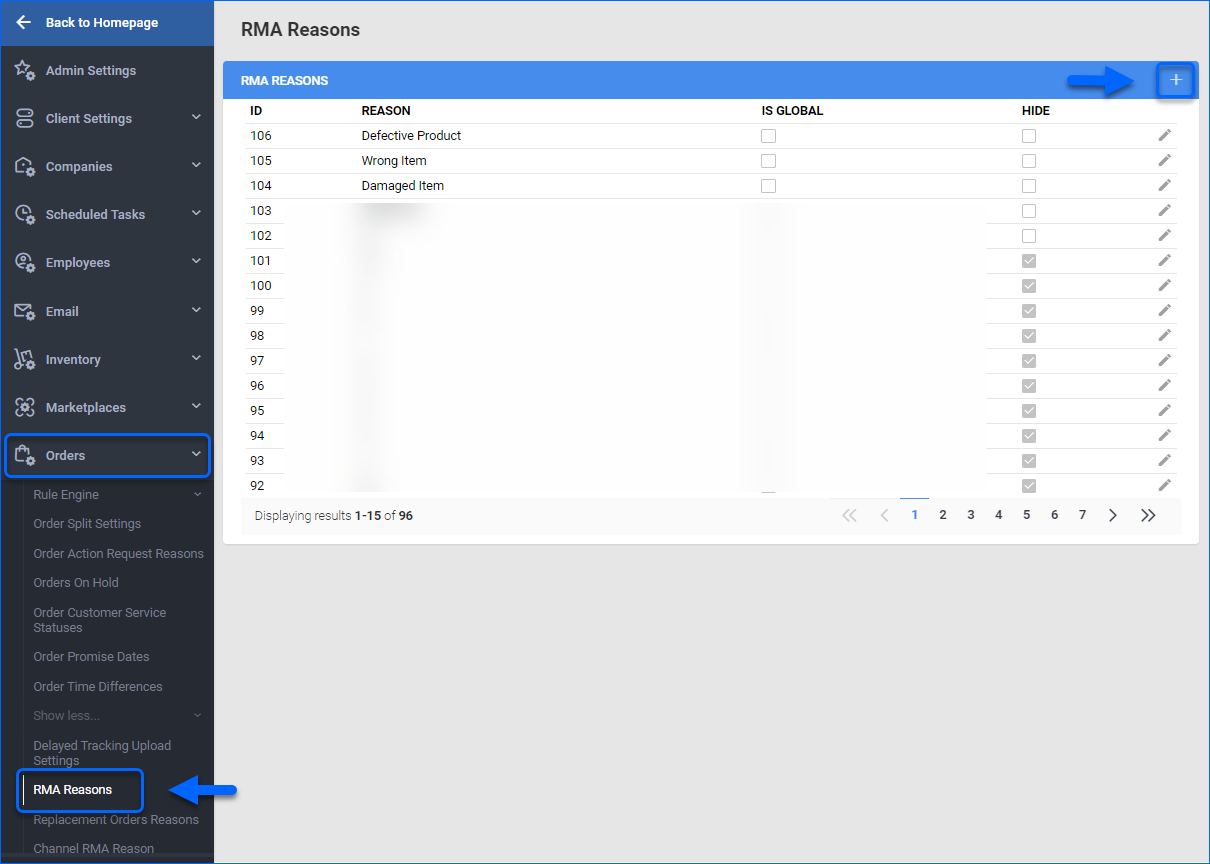
- Enter the Reason and click Save.
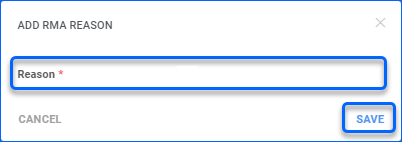
- If you wish to alter an existing RMA, click Edit RMA Reason.

- Check the Hide checkbox and click Save to disable the particular reason from appearing on the RMA’s Reason dropdown list when creating new RMAs.
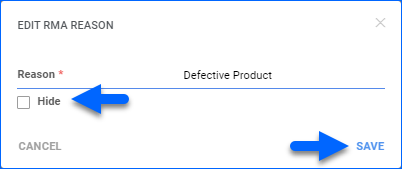
Map RMA Reasons per Channel
To ensure proper matching of your channel return reasons with those in Sellercloud, it is important to map them.
- Go to Settings > Orders and click Show more…
- Select Channel RMA Reason Mapping and click the Edit icon.
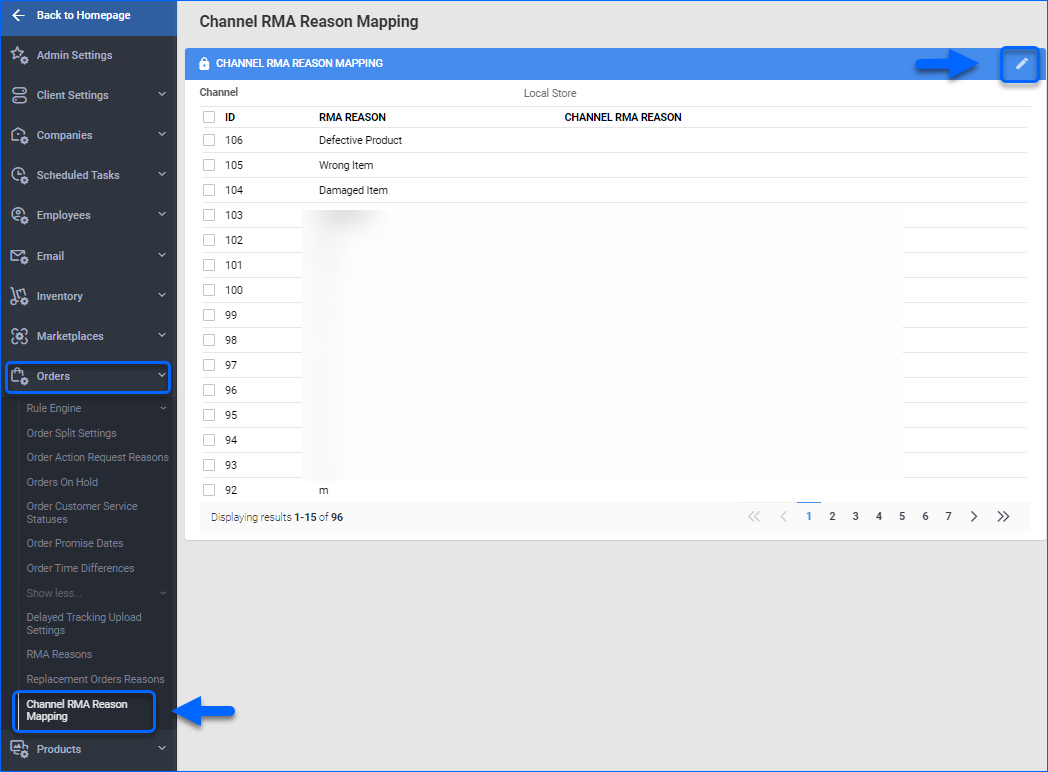
- Once done, click Save.
Repeat the above flow to map RMA reasons for all applicable channels.
RMA Resolutions
Once you create an RMA, you can set its RMA Resolution:
- Navigate to Orders > Manage RMAs and select an RMA.
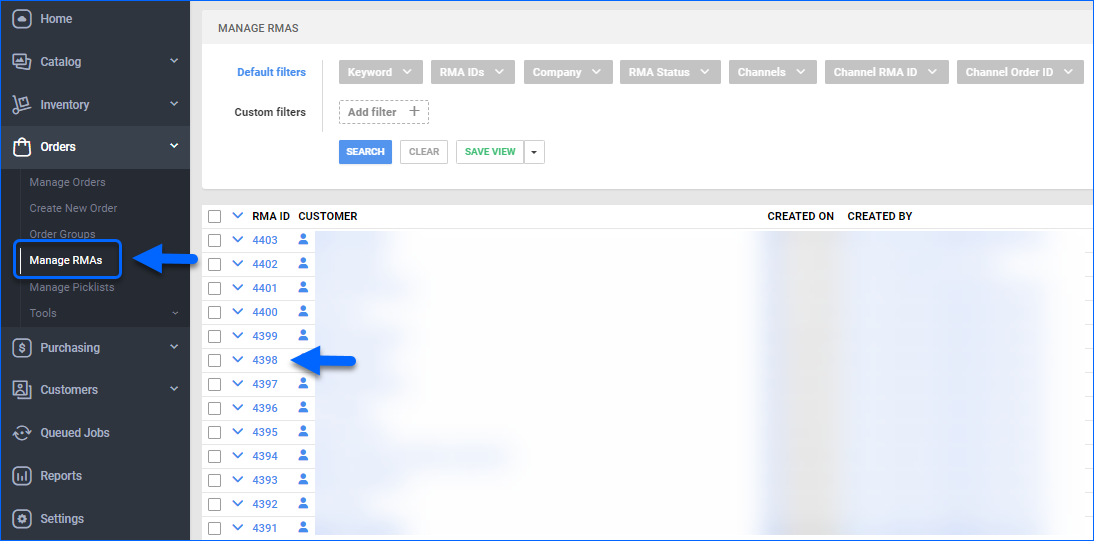
- In the Items panel, click Edit.

- Select items and click Set Resolution.

- Choose a Resolution from the dropdown and type in a Comment.
- Click Set Resolution.
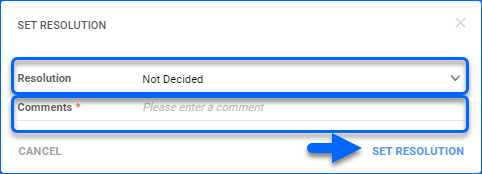
You can choose from different RMA Resolutions, described in the table below:
Resolution Type |
Description |
| Not Decided Resolution | This resolution is used when it has to be clarified which actions (refund, exchange, repair, etc.) should be taken. You will be able to update the resolution later. |
| Exchange | Use this option when the returned SKU is being exchanged for a different SKU. You will be prompted to select a new SKU and a replacement order will be created. It’s not mandatory for the RMA to be received in order for the replacement order to be created. |
| No Action Needed | This resolution means that you don’t plan to refund or exchange the product. |
| Refund | If the customer wants to return the item and be reimbursed, use this resolution.
You can process the refund by selecting the Issue Refund action on the Order Details page. If you created a replacement order and then changed your mind and decided to process a refund instead, navigate to the parent order and create a new Refund RMA. |
| Reject | Use when customers reject the items because they aren’t as described, fit for their purpose, or of satisfactory quality. |
| Repair | This resolution is used when a customer sends a broken or malfunctioning item back to be repaired. |
| Replace | Use when the returned SKU is being replaced with another item of the same product. A replacement order with all the order information, including the address and item, will be created. The RMA must be received first otherwise, it won’t create the replacement order, but will update the resolution to Replace. The replacement order total will default to a full discount. |
Overview
The Return Merchandise Authorization (RMA) process is the recommended workflow for managing order returns from the initial customer contact to the receipt of the returned items back into your warehouse. With Sellercloud, you can configure various Reasons and Resolutions to help you keep track of why an RMA was created and how it will be handled.
Create RMA Reasons
By default, Sellercloud provides a list of standard RMA reasons, known as Global Reasons. These reasons can be easily accessed and used while processing customer returns. In addition, you can create your own custom RMA reasons individually and in bulk.
Individual RMA Reason
Follow the steps below to create an individual RMA Reason:
- Navigate to Settings > Orders and select RMA Reasons.
- Type the title of the Reason and click Add Reason.
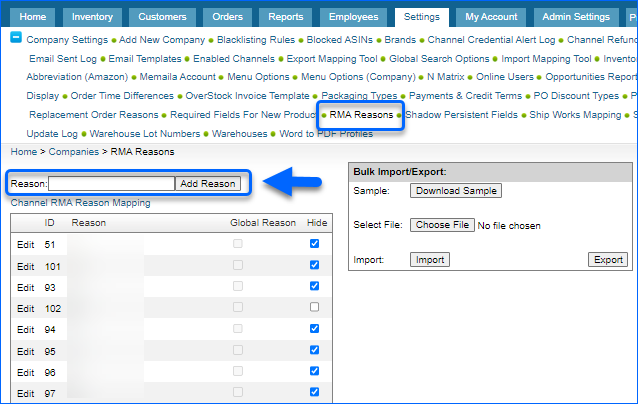
- The new Reason will be added to the list.
- If you wish to alter an existing RMA, click Edit, perform your changes, and click Update.
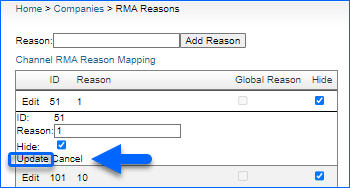
To disable a particular reason from appearing on the RMA’s Reason dropdown list when creating new RMAs, select the Hide checkbox and click Save Settings.
Bulk Import RMA Reasons
You also have the option to create several RMA Reasons in bulk with a file import:
- Navigate to Settings > Orders and select RMA Reasons.
- Click Download Sample to get an Excel file, in which you can list your Reasons on separate rows.
- Once done, click Choose File and select your file.
- Click Import and your new reasons will be imported.

If you wish to obtain a list with all of your RMA Reasons, click Export.
Map RMA Reasons per Channel
To ensure proper matching of your channel return reasons with those in Sellercloud, it is important to map them.
- Navigate to Settings > Orders and select RMA Reasons.
- Click on Channel RMA Reason Mapping.

- Choose a Channel and map the Channel RMA Reasons.

- Once done, click Save Settings.
Repeat the above flow to map RMA reasons for all applicable channels.
RMA Resolutions
Once you create an RMA, you can set its RMA Resolution:
- Navigate to Orders > Manage RMAs and select an RMA.
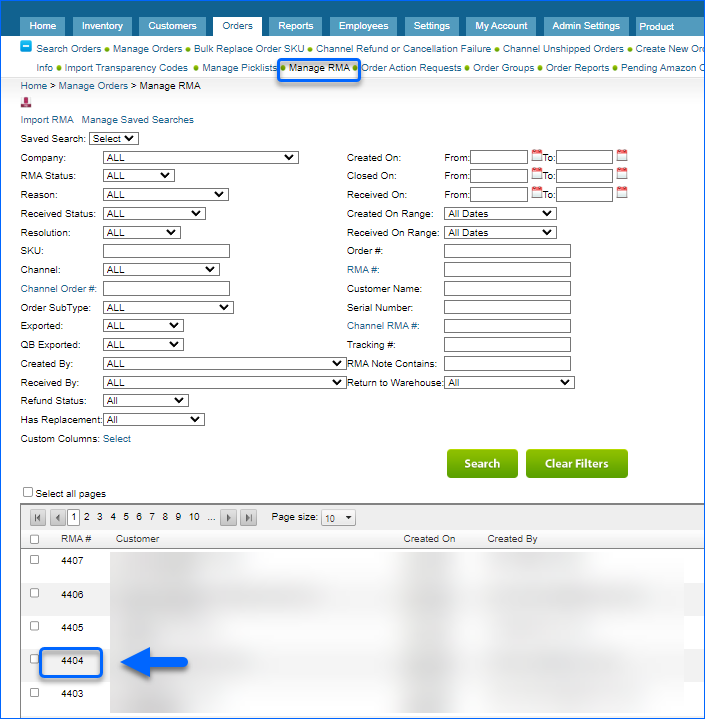
- In the SKU panel, select the required items and quantity.
- From the Select Action dropdown, choose the appropriate Resolution to set.

- Click Save.
You can choose from different RMA Resolutions, described in the table below:
Resolution Type |
Description |
| Not Decided Resolution | This resolution is used when it has to be clarified which actions (refund, exchange, repair, etc.) should be taken. You will be able to update the resolution later. |
| Exchange | Use this option when the returned SKU is being exchanged for a different SKU. You will be prompted to select a new SKU and a replacement order will be created. It’s not mandatory for the RMA to be received in order for the replacement order to be created. |
| No Action Needed | This resolution means that you don’t plan to refund or exchange the product. |
| Refund | If the customer wants to return the item and be reimbursed, use this resolution.
You can process the refund by selecting the Issue Refund action on the Order Details page. If you created a replacement order and then changed your mind and decided to process a refund instead, navigate to the parent order and create a new Refund RMA. |
| Reject | Use when customers reject the items because they aren’t as described, fit for their purpose, or of satisfactory quality. |
| Repair | This resolution is used when a customer sends a broken or malfunctioning item back to be repaired. |
| Replace | Use when the returned SKU is being replaced with another item of the same product. A replacement order with all the order information, including the address and item, will be created. The RMA must be received first otherwise, it won’t create the replacement order, but will update the resolution to Replace. The replacement order total will default to a full discount. |
